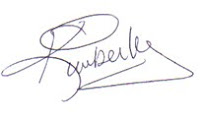us·age [yoo-sij, -zij] –noun. Any manner of doing or handling something
You may not realize it, but you utilize licensing/usage every day. On a specific project you are granting your General Contractor/vendor usage of your designs in order bring your creations to life.
However, though your GC physically has copies of your design documents, you would never, ever consider letting them go to the local blueprint place, make as many copies as he/she likes, and build additional identical structures for other clients, or resell those plans to third parties. Well, at least not without compensating you significantly anyway. If you were to allow this, the money you would receive for it would be considered a usage or license fee you would require your GC to pay before using those designs in that way. You would still own those designs.
And, if you have more than one vendor that would like to use the designs for another project, you would definitely charge those vendors to do that. They are going to make money from your designs, you surely deserve to receive compensation for that.
Just as it is with your firm's designs, images are the intellectual property of the creator.
Usage is typically broken down into four general categories:
- Commercial - refers to images that are used to sell or promote a product, service, or idea.
- Editorial - refers to photography used for educational or journalistic purposes.
- Advertising - any instance where you have paid to have your ad (and the image in question) placed in a magazine, journal,
- Retail - refers to photography commissioned or purchased for personal use.
The difference between these categories is not in the type of photography, but in the use of the images. For example, suppose you hire a photographer to document project ground breaking event. For you, the type of photography being commissioned is event coverage, and the use is commercial because the your firm will use the photographs to promote your new project. However, if a local newspaper covers the same event, the use would be editorial.
Retail photography is for clients that are only desiring images for their own personal use, such as a family portrait or a wedding. The client isn’t using it to promote themselves for monetary gain. However, if they choose to use their family portrait in their advertising campaign for a family owned business, now the usage is commercial because they are intending to make money from the image.
So, as you can see, the same image can have various types of usage. And each different type generally has a difference cost for usage. A basic rule of thumb, the more money an image stands to make you, the more it will cost to use that image in that way because that image is more valuable to you.
Usage can be a complex topic, and can be confusing. But, what it comes down to is you created those designs, and, you can't imagine allowing someone to use those designs to make money without compensating you for it. So, you grant them license/usage of those designs.
Whether we are your photographer on a project or not, we are happy to help make your commissioning of photography a successful, pain-free experience!

Kimberly Blom-Roemer Owner/Photographer
R2 Photography, LLC
ASMP-General Member/National Board Member, IAAP, AIAP, REPAI
www.r2-photography.com










